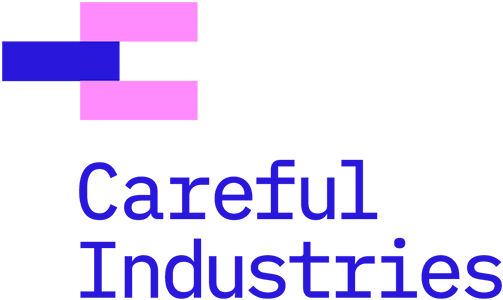Tentacular Thinking - Weeknotes 4
Written with Anna Williams.
The title, Tentacular Thinking, is taken from the name of the second chapter in Donna Haraway’s 2016 book, Staying with the Trouble: Making Kin in the Chtulucene. In the book, she discusses how humans and non-humans are messily connected through “tentacular” links and practices. She describes the necessity and benefit of complexity and encourages us to embrace the messiness of complexity. Using the metaphor of the compost pile, she describes not just this messiness of interconnected experiences, practices, thinking, but also the new opportunities that can grow from that messiness. We exist in a “thick copresence” (4) in which we “are at stake to each other” (55).
As I was reading her ideas of the complexity within relational worldings (50) and the imagery she uses to describe them, I started to wonder if similar imagery might help us think about possible ways to visualise our Observatory. A key thing we’re trying to do is change how we relate to each other, to foresight, and to the future. If you’ve read any of our other weeknotes, I’m sure you’re well-aware that things have been quite up in the air, with what feels like endless possibilities of what our foresight commons infrastructure might look like. So, I thought I’d test out my doodling skills and try to draw some different visualisations for these relations.
As Anna described in Weeknotes 2, the futures cone is a common tool used in foresight to visualise a plurality of futures. She also offered an alternative illustration for the futures cone that shows multiple converging possible futures. Thinking about this convergence and the ways Haraway imagines building relationality and sympoiesis — “making-with” (58) — I’ve tried to visualise other ways for demonstrating the collective “response-ability” and “collective knowing and doing” (34) that the foresight commons infrastructure hopes to cultivate. Haraway uses tentacles and tentacular thinking as ways to describe these relationships and connections. Taking a bit of an outside-the-box, somewhat whacky approach, I offer these interpretations using the spider, the jellyfish, and mycelium as possibilities.
Tentacular Thinking
With the spider model, the spider’s palps represent capital and the state. These are the dominant forces driving majority of foresight research now, along with the next section of “business as normal”. The bottom portion is the biggest and represents the majority of people. This is where we are trying to build our foresight commons from. It is from here that different realities of now (aka “the present”) converge within the foresight commons in the not-so-distant future. Here, there also exists a plurality of possible futures, but in / through / via / because of the foresight commons, these different futures operate in relation to one another, whether this relationality is built on shared values, shared practices, or something else we haven’t thought of yet but that might be part of the foresight commons infrastructure. From there opens up the possibilities of futures that are even further off, but continue and expand the relationality built in the foresight commons and, thus, is more inclusive and thoughtful.
Tentacular Thinking, Spider Model detail
The jellyfish illustration pictures the present “now” as a jellyfish with numerous tentacles protruding from its body. These tentacles represent the different realities that exist in the present, with some converging in the not-so-distant future into the foresight commons. As with the spider model, there are still multiple possible futures that exist within the foresight commons that all exist (and operate?) in relation to one another, and from there opens up even more possibilities for futures further off built from / through the relationality of the foresight commons.
Tentacular Thinking, Jellyfish detail
The mycelium is yet another way to illustrate the relationship between the numerous realities that exist now in the present, their convergence in the not-so-distant future through the foresight commons and the further off futures that are possible through this meeting in the commons.
Tentacular Thinking, Mycelium detail
The process of attempting to bring together Haraway’s framing of tentacular thinking with our ideas of relationality, while transposing this into the context of the observatory has been helpful as we prepare to enter the next phase of our research process. Next we will start thinking about what prototypes we might use to begin conducting our interviews.
We think that it is really useful to start prototyping the way the foresight observatory could look. After our workshop with stakeholders we realised that it is sometimes difficult to understand what you need and how unknown interventions could help. So in light of this, we have been thinking about developing some prototypes of the observatory, in order for people to critique and improve them through our interview process. At the moment we want to develop our prototype of how the observatory could look around three areas. Firstly through building a shared understanding of foresight; this could happen through devising a set of key principals or a constitution which will act as a guide for people who visit the observatory. In the future training could be developed around such principals. The second is the concept of a repository, where we can find ways to categorise and cross reference work that has already happened in foresight. This can act as a resource for the third area, which is to harmonise and facilitate collaborative foresight work. Ultimately providing ways to collaboratively commission foresight work. Although the last is a future goal, and will require long term planning and resources, we are excited to start testing our ideas. The next stage will be to take our prototype to interviews, and revise it as necessary. If you have any ideas on the project, and are involved in foresight within civil society we would love to hear from you!





